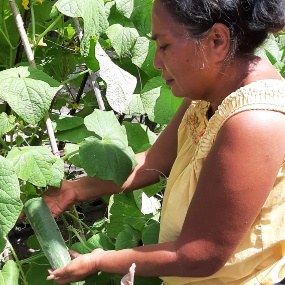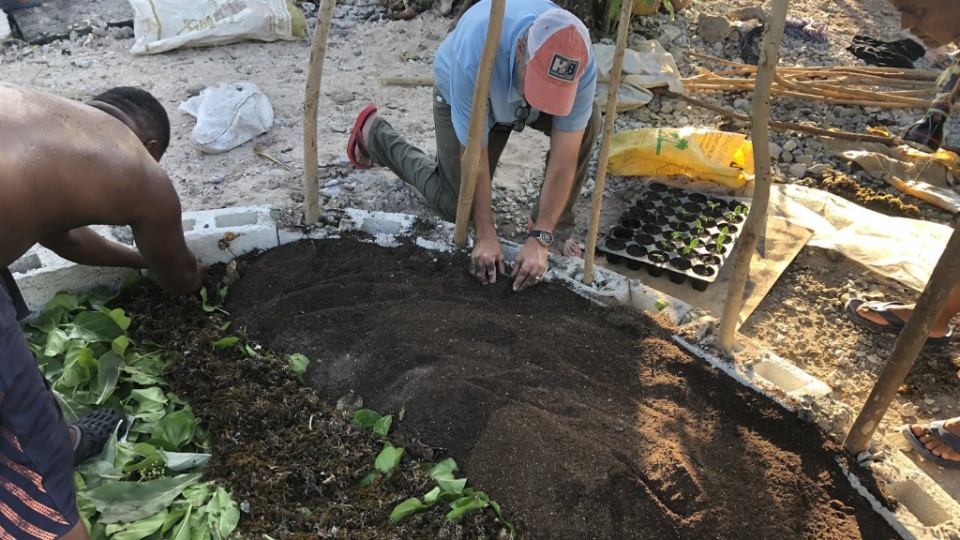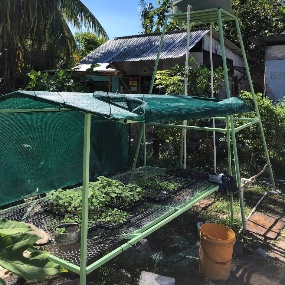For the last two years families and communities in the Pacific island nation of Kiribati have been benefiting from the creation of intelligently designed gardens.

Kiribati home gardens, Latter-day Saint Charities, Merea Aboro, self-reliance,
Merea Aboro eating a slice of melon grown in her family's home garden© 2021 by Intellectual Reserve, Inc. All rights reserved.It all started when missionaries from Latter-day Saint Charities ─ the humanitarian arm of The Church of Jesus Christ of Latter-day Saints ─ got together with Taiwanese Technical Farms and the Ministry of Environment and Land and Development to educate island residents on how to grow and use nutritionally rich vegetables in self-composting, raised garden beds.
These gardens were devised to help decrease the incidence of diabetes by offering inexpensive, healthy food options, and to enable people to improve small family gardens and share the food they grow.
 DOWNLOAD
DOWNLOADHumanitarian missionaries, Jeff and Judy Brock, helped educate the community gardeners on maintaining the gardens and helped build nurseries. Judy taught community classes of the “Eat Healthy Be Active” program, a Pacific area initiative created by the Church to help prevent type 2 diabetes.

Kiribati Home gardens, Latter-day Saint Charities, Jeff Brock, humanitarian missionaries
Jeff Brock, humanitarian missionary, working with resident, planting seedlings in a family garden© 2021 by Intellectual Reserve, Inc. All rights reserved.The large nursery is 9.75m by 1.2 m ( 32 ft by 4 ft) and was built at the learning garden in 2019. The smaller satellite nurseries (2.4 m by 1.2 m) (8 ft by 4 ft) were designed to produce locally available seedlings and were started just before COVID-19 emerged.
Tamana Natanaera, Welfare and Self-Reliance Manager for the Church in Kiribati, saw the project through to completion when the missionaries had to leave.
The Brocks, now home in the USA due to COVID-19, are still sourcing and acquiring supplies and seeds, and remotely coaching island residents as they implement the projects supported by Latter-day Saint Charities.
The future of these gardens looks bright. An order of seven kilos of seeds, nearly twice the size of the 2020 seed order, arrived in Kiribati in February 2021 (delayed due to COVID).

These seeds will grow to seedlings at the eight satellite nurseries on the island of Tarawa and will then be distributed to local community gardeners. Additional satellite nurseries are being planned for this year on the five outer islands of Abaiang, Marakei, Maiana, Abemama, and Butaritari.
Members of The Church of Jesus Christ of Latter-day Saints believe that God created this world as an expression of His love. According to Latter-day Saint scripture, the earth is to “please the eye and to gladden the heart…for food…to strengthen the body and enliven the soul” (Doctrine and Covenants 59:18-19).
These community gardens are helping residents care for the earth, their families and for each other.
Read more in the Church News.